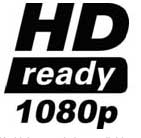Difference Between 1080p and 1080i

Numerical values assigned to HDTV sets and video coding are based on the number of rows that it is capable of displaying, thus 720p has 720 rows and 1080p/I has 1080 rows. The difference between p and i is the method in which the images are being displayed. P stands for progressive; this is a method where the whole image frame is displayed at a time. I stands for interlaced which is a little bit more complex. In interlacing, an image is cut into 1080 strips of pixels. All odd numbered strips constitute an image while all even numbered strips are considered as another. This breaks a single image frame into two images which are then played in quick succession to fool the eye. Simply put, 1080p is superior compared to 1080i since it doesn’t use tricks to display a 1080 resolution. 1080i only has an effective resolution of 800 due to the filtering methods applied to the signal.
These values do not only apply to TV sets and other display devices, video signals can also be in 1080p or 1080i. A 1080i video signal could be played in both types but the display device would need to deinterlace the 1080i signal before it can be shown. A 1080p signal though, can be a little bit trickier when playing in a 1080i device. Some devices cannot play 1080p video; there is just nothing you can do about it. Others can but it would need to downscale the 1080p signal so that it can be displayed at all, which means losses in quality.
The disadvantage with 1080p is that there are only a very limited amount of media that do play at this resolution; most are using the 1080i or 720p. That means even if you have a 1080p capable player and TV set if the disc you are playing is only in 1080i or 720p, there is no advantage. The only consolation is the fact that 1080p is an eventual future. It would only take time before most manufacturers and media makers move to the 1080p format.
Summary:
1. 1080p displays images progressively while 1080i images are interlaced.
2. 1080p has a 1080 effective resolution while 1080i only has 800 due to filtering.
3. 1080p sets can accept and deinterlace 1080i signals for display.
4. 1080i sets that accept 1080p signals need to process the signals in order to display it.
5. Most media today come in 1080i or 720p and only a very few are for 1080p.
- Difference Between Sony Cybershot S Series and W Series - December 22, 2012
- Difference Between Samsung Galaxy S3 and iPhone 5 - December 21, 2012
- Difference Between Samsung Galaxy S2 (Galaxy S II) and Galaxy S 4G - December 20, 2012

Many incompatibilities could have occurred throughout the update.
Windows-7 and Windows Vista are more compatible and also the
upgrade procedure is going to be done more easily.
Windows8 OS is capable of employed in pills, which are currently getting
increasingly more frequent as of late.
Hello there.
Great articles. I think it would be nice if the articles were dated so that references like, “Most media today come in 1080i or 720p and only a very few are for 1080p.” could be taken into account.
I believe that there are many 1080p (and now 4k) video sources available to consumers.
I’m just sayin’ is all.
– Warren